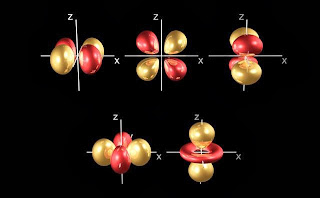 |
| Scientific American, see [2] below |
Stereotype threat refers to being at risk of confirming, as self-characteristic, a negative stereotype about one's group (Steele & Aronson, 1995). This term was first used by Steele and Aronson (1995) who showed in several experiments that Black college freshmen and sophomores performed more poorly on standardized tests than White students when their race was emphasized. When race was not emphasized, however, Black students performed better and equivalently with White students. The results showed that performance in academic contexts can be harmed by the awareness that one's behavior might be viewed through the lens of racial stereotypes. [1]
Scott Barry Kaufman seems to refer to this in his Scientific American article "The Need for Belonging in Math and Science" [2]:
From her earliest memories, Catherine Good was good at math. By second grade she was performing at the fourth grade level, sometimes even helping the teacher grade other students’ work. She was praised constantly for her “gift”, often overhearing her mother tell anyone who would listen that she was a “sponge” for anything mathematical.
As time went on:
Achieve she did. Good did so well as an undergraduate, that she decided to pursue a Ph.D. in mathematics. Again, she wasn't driven by the sheer joy, but by other forces:
“My counter-stereotypical achievement, coupled with my belief that those successes were rooted in an innate gift, not only fueled my academic pursuits, but also formed the basis for my academic identity.”
For awhile, Good performed as usual in her graduate program. But then something happened that would change the course of her career: her identity became threatened. As Good puts it, “the identity as a mathematician that I thought was so well-entrenched and established came crashing down, leaving me in a professional crisis.”
Despite her good grades, a flood of self-doubt crept in. She suddenly wondered: Was I simply no longer inspired by the level of rigor and originality necessary for graduate level mathematics? Was it the fact that for the first time in my academic life, I had to work, really work, at my studies?
And, finally...
Whatever the cause(s), one thing was certain: she no longer felt a sense of belonging in mathematics. As a result, she left mathematics.
I have had to come to grips with this in myself, having tried masters programs in physics at Texas State and Astrophysics at UT: certain things stick out to you.
1. You're the only "one." The cartoon above pertaining to the difference for women in STEM could also be of the one African American, Hispanic/Latino/Native American; the Asian that HAS to be good at math as a matter of genetics, so any questions for clarification and understanding means you're a defect somehow.
2. Some indication of that in my offspring. He's performing quite well in Civil Engineering, yet he often feels like "the one." I'm sure if he asked around campus, he'd find it not so unique.
Ironically, the strength of my taking a masters online is I am "one" of many "ones" online. We don't see each other; we only interact/question via email. I send homework in PDF. If I experience some form of stereotype threat, it is in my own self-doubt, which are many: am I too old to do this; will I be the only "one" in the room? There is a freedom and a loneliness in online anonymity, the only brief camaraderie I experienced when I inquired last year how they weathered Hurricane Sandy:
Stevens University is in
Hoboken, NJ.
I recall once that observation being made by someone I worked with at Motorola: "we're the 'only black engineers' in the room," my fellow alumni said. "And, we're the best damn engineers IN the room" I shot back. Despite that bravado, I wish I had Dr. JC Holbrook's paper on survival strategies [3] in many instances I felt the pressure of stereotype threat. Religion and spirituality - as she mentions - are forms of mental survival strategies (go see 12 Years a Slave) and cultural expression that if not abused by charlatans, pundits, lying politicians and political machinations spewing manipulative talking points, propels individuals and groups forward despite near insurmountable obstacles. Think of the Civil Rights movement. Unless society were to make a massive, herculean change towards eliminating inequality, this will remain necessary.
To go further beyond a masters, I'll have to emerge from online anonymity, even with my company behind me (as they enthusiastically are), I'll have to use survival strategies and fight within myself this "stereotype threat" that morphs into self-fulfilling prophecy for many of us. One is a promise I made to my parents. My journey in science started with a
chemistry set and my first almost fatal experiment. Instead of discouraging me, they just barred me from repeating THAT particular one. As science lifts countries out of poverty, it has lifted me twice: once post the US Air Force; second eight years after a lay off from that same company where we were the "best damn engineers in the room." And I have obligated myself to finish what they planted in me and seed it forward to their grandchildren, and any other youth I can influence.
It is an important, internal and external struggle we ultimately must win. This country is bereft of a prosperous future without our triumph and our inputs.
1. Reducing Stereotype Threat: What is 'Stereotype Threat'?
2. SciAm Beautiful Minds: The Need for Belonging in Math and Science
3. P4TC: Survival Strategies






